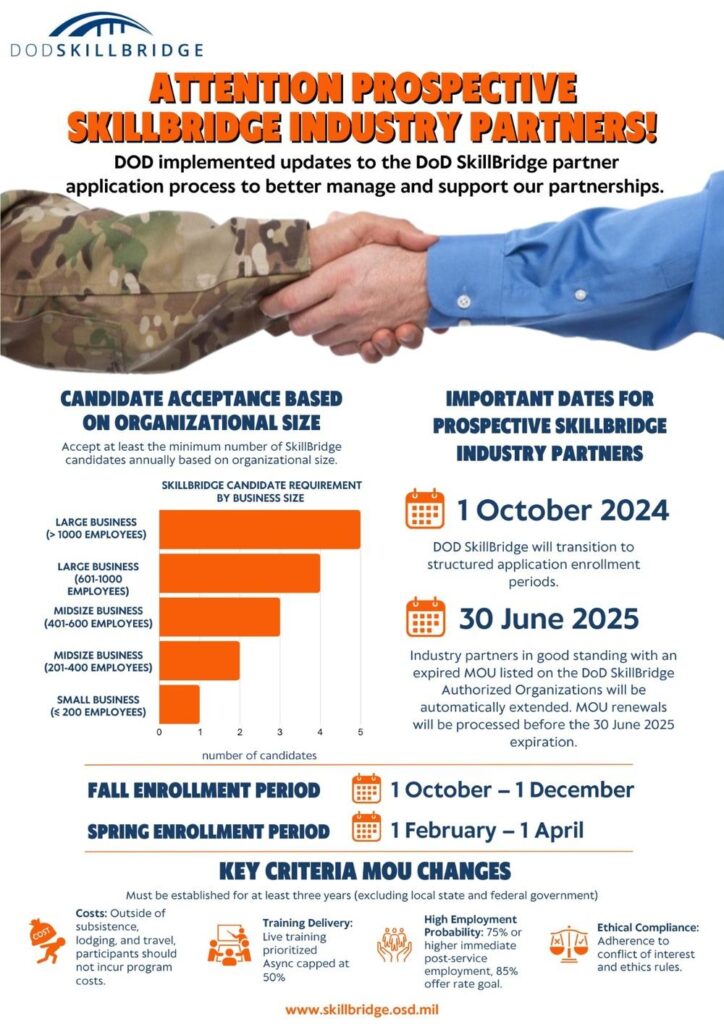Transitioning from military service to civilian life can be a daunting journey for veterans, but programs like SkillBridge have long been a beacon of hope, offering valuable job training opportunities to help ease the transition. However, recent changes to the SkillBridge program have sparked concern among the veteran community. Could these changes potentially limit opportunities for veterans looking to build a successful post-military career? Let’s explore the implications of the upcoming adjustments and how they may impact those who have bravely served our country.
Increased competition in job placement
With , veterans are facing new challenges in securing employment after their service. The SkillBridge Job Training Program, which has been a valuable resource for transitioning service members, is undergoing changes that could potentially limit opportunities for veterans. These changes raise concerns about the future prospects for veterans seeking to enter the workforce and make a smooth transition to civilian life.
The new adjustments to the SkillBridge program are being implemented to address the growing demand for skilled workers in the job market. While the intention is to better align training opportunities with industry needs, there are worries that these changes may inadvertently disadvantage veterans who rely on the program for job readiness. As competition for jobs intensifies, it is crucial for policymakers and program administrators to ensure that veterans continue to have access to the support and resources they need to succeed in the workforce.
Potential impact on program length and format
There are potential changes on the horizon for the SkillBridge Job Training Program that could have a significant impact on the length and format of the program. These changes may limit opportunities for veterans looking to participate in the program and gain valuable job training experience before transitioning into civilian life.
Some of the proposed changes include:
- Reducing the program length from 12 weeks to 8 weeks
- Implementing stricter eligibility requirements
- Limiting the number of participants in each cohort
Recommendations for maximizing SkillBridge benefits
For veterans looking to maximize the benefits of the SkillBridge program, there are several key recommendations to keep in mind. First and foremost, it’s important to start the planning process early. Research potential organizations or companies that offer SkillBridge opportunities and reach out to them in advance to secure a spot in the program. By being proactive, veterans can increase their chances of finding a meaningful training experience that aligns with their career goals.
Additionally, networking plays a crucial role in making the most of SkillBridge. Attend job fairs, connect with alumni from the program, and seek out informational interviews with professionals in your desired field. Building relationships with individuals who have gone through the program or work in the industry can provide valuable insights and potentially lead to job opportunities post-graduation. Remember, the more proactive and engaged you are during the SkillBridge program, the greater the benefits you’ll reap in terms of skill development and career advancement.
In Summary
the proposed changes to the SkillBridge Job Training Program have sparked debate among stakeholders about the potential impact on opportunities for veterans. While some argue that stricter eligibility criteria may limit participation, others believe that enhancing program oversight could ensure better outcomes for transitioning service members. As the discussion evolves, it is crucial to consider the diverse perspectives and needs of our veteran community. Ultimately, the future of the SkillBridge program will depend on finding a balance between accountability and accessibility, to support our veterans in realizing their full potential in civilian careers. Stay tuned for updates on this developing story.
